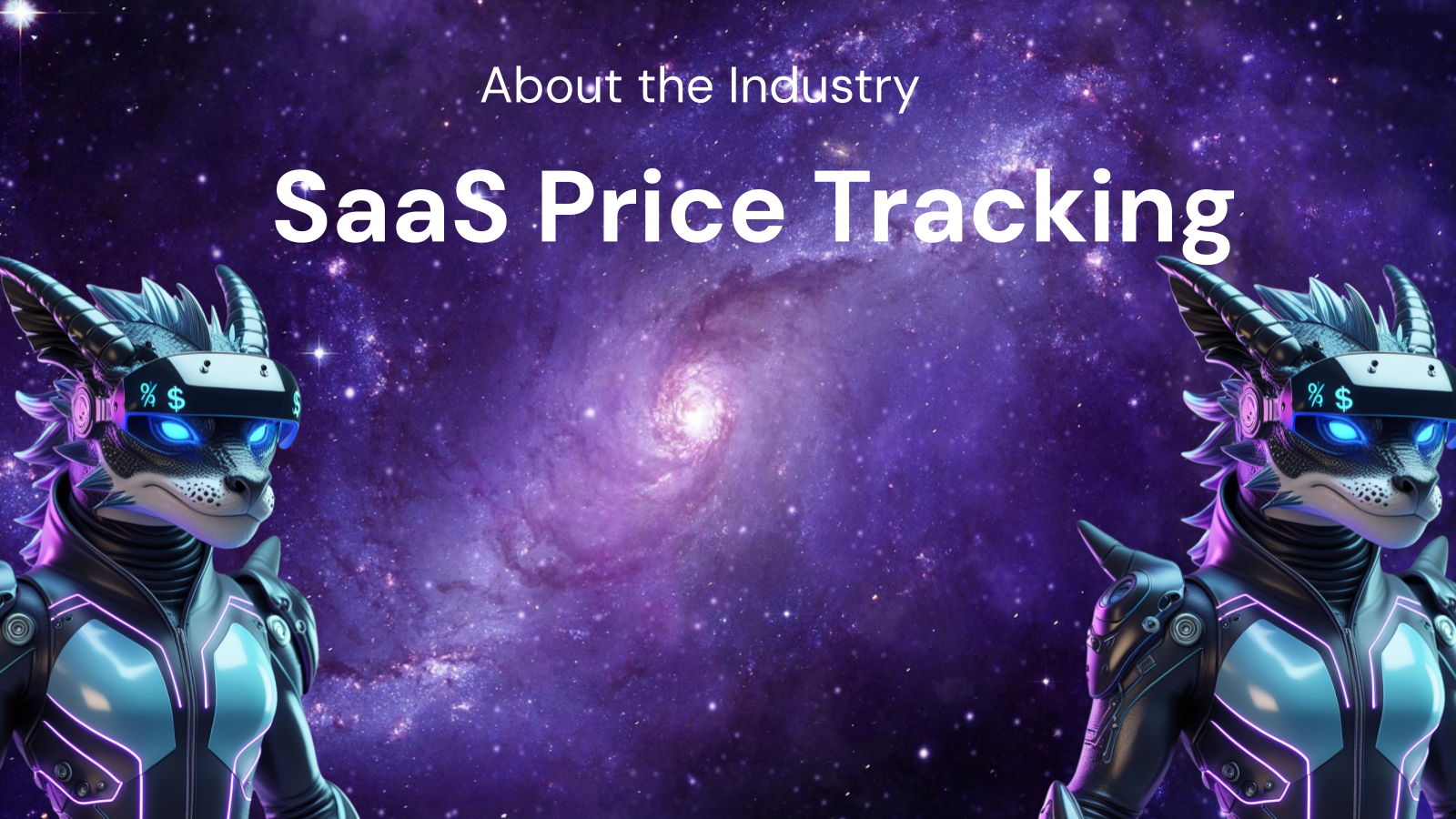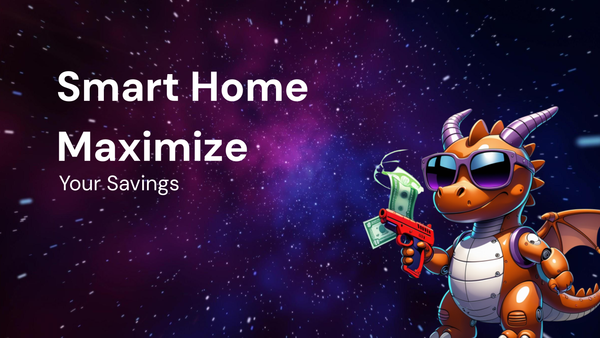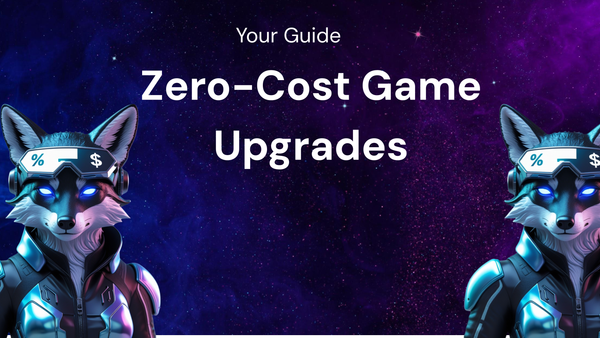SaaS Price Tracking: What It Tells You About the Industry

SaaS Price Tracking: What It Tells You About the Industry
The Software as a Service (SaaS) industry is a dynamic and fiercely competitive landscape. New players emerge constantly, established companies roll out new features, and pricing models evolve at a rapid pace. Navigating this complex environment can be challenging for both SaaS vendors and potential customers. That's where SaaS price tracking comes in.
SaaS price tracking is the process of systematically monitoring and analyzing the pricing of various SaaS products over time. It's more than just comparing prices at a single point in time; it's about understanding the trends, patterns, and strategies that drive pricing decisions within the SaaS ecosystem. By meticulously tracking SaaS prices, we can gain valuable insights into the overall health, competition, and direction of the industry.
This blog post delves into the intricacies of SaaS price tracking and explores the wealth of information it reveals about the industry. We'll examine the benefits of price tracking for both vendors and customers, analyze the key factors that influence SaaS pricing, and discuss the trends and patterns that emerge from price data. We'll also look at the tools and techniques used for effective SaaS price tracking and explore how this data can be used to make informed decisions and stay ahead of the curve in the ever-evolving SaaS landscape.
Why Track SaaS Prices? Benefits for Vendors and Customers
SaaS price tracking offers a plethora of benefits for both vendors and customers. Understanding these advantages is crucial for appreciating the value of this practice.
For SaaS Vendors:
- Competitive Intelligence: Price tracking provides invaluable insights into the pricing strategies of competitors. By monitoring their prices, vendors can understand how their offerings stack up in the market and identify opportunities to differentiate themselves. This knowledge allows them to adjust their pricing strategies to remain competitive and attract customers.
- Market Positioning: Price data helps vendors understand their position in the market. Are they priced competitively compared to similar solutions? Are they perceived as a premium offering justifying a higher price point? Price tracking can help answer these questions and inform strategic decisions related to product development, marketing, and sales.
- Pricing Optimization: Analyzing historical price data and correlating it with sales performance allows vendors to identify optimal price points. They can experiment with different pricing models, such as usage-based pricing or tiered pricing, and track the impact on revenue and customer acquisition. This data-driven approach ensures that pricing strategies are aligned with business goals.
- Identifying Market Trends: Price fluctuations often reflect broader trends within the industry. For example, a sudden drop in prices for a particular type of SaaS solution could indicate increased competition or the emergence of new technologies. By monitoring these trends, vendors can anticipate market shifts and adapt their strategies accordingly.
- Detecting Pricing Anomalies: Price tracking can help vendors identify pricing anomalies that might indicate errors in their pricing system or unauthorized price changes. This allows them to quickly address these issues and prevent potential revenue loss.
- Strategic Planning: Data gathered through price tracking is a valuable input for strategic planning. It helps vendors understand the dynamics of the market, identify opportunities for growth, and make informed decisions about product development, marketing, and sales.
For SaaS Customers:
- Finding the Best Deals: Price tracking enables customers to find the best deals on SaaS solutions. By comparing prices from different vendors, they can identify the most affordable option that meets their specific needs.
- Negotiating Better Prices: Armed with price data, customers can negotiate better prices with SaaS vendors. They can use the information to demonstrate that a competitor offers a similar solution at a lower price, thus strengthening their bargaining position.
- Understanding Pricing Models: Price tracking helps customers understand the different pricing models used by SaaS vendors. This knowledge allows them to choose the model that best aligns with their usage patterns and budget.
- Avoiding Price Gouging: By monitoring prices over time, customers can identify instances of price gouging and avoid paying inflated prices for SaaS solutions.
- Budgeting and Forecasting: Price data can be used to accurately budget for SaaS subscriptions. By tracking prices and usage patterns, customers can forecast their future SaaS spending and avoid unexpected costs.
- Evaluating Value for Money: Price tracking helps customers evaluate the value they are getting for their money. By comparing prices and features, they can determine which SaaS solutions offer the best bang for their buck.
- Making Informed Decisions: Ultimately, price tracking empowers customers to make more informed decisions about their SaaS subscriptions. By having access to comprehensive price data, they can choose the solutions that best meet their needs and budget.
Factors Influencing SaaS Pricing
SaaS pricing is a complex equation influenced by various factors, both internal and external to the vendor. Understanding these factors is essential for interpreting price data and drawing meaningful conclusions.
- Cost of Goods Sold (COGS): While SaaS doesn't have traditional manufacturing costs, COGS includes expenses like server infrastructure, hosting, data storage, customer support, and software licenses. Vendors need to factor in these costs to ensure profitability.
- Features and Functionality: The breadth and depth of features offered by a SaaS solution are a primary driver of price. More comprehensive solutions with advanced capabilities typically command higher prices.
- Market Demand: The demand for a particular type of SaaS solution influences its price. If there's high demand and limited supply, vendors can charge a premium.
- Competition: The competitive landscape heavily impacts pricing. In highly competitive markets, vendors often lower prices to attract customers. In niche markets with fewer players, they might command higher prices.
- Target Audience: The target audience also plays a role. Solutions targeting enterprise clients typically have higher price points than those targeting small businesses.
- Value Proposition: The perceived value of a SaaS solution influences its price. If a solution significantly improves efficiency, reduces costs, or generates revenue, vendors can charge a premium.
- Customer Acquisition Cost (CAC): The cost of acquiring a new customer, including marketing, sales, and onboarding expenses, is factored into pricing. Vendors need to recover their CAC over the customer's lifetime.
- Customer Lifetime Value (CLTV): The predicted revenue a customer will generate throughout their relationship with the vendor influences pricing. Vendors might offer lower upfront prices to attract customers with high CLTV.
- Pricing Model: The chosen pricing model, such as subscription, usage-based, tiered, or freemium, impacts the price and how customers perceive value.
- Brand Reputation: Established brands with a strong reputation for quality and reliability often command higher prices.
- Economic Conditions: Macroeconomic factors, such as inflation and interest rates, can influence SaaS pricing.
- Geographic Location: Pricing can vary based on geographic location due to differences in currency exchange rates, labor costs, and market conditions.
Trends and Patterns Emerging from SaaS Price Tracking
Analyzing historical SaaS price data reveals several interesting trends and patterns that provide valuable insights into the industry:
- Price Compression in Mature Markets: As markets mature and competition intensifies, price compression often occurs. This means that prices for similar solutions tend to converge over time. This is particularly evident in well-established SaaS categories like CRM and email marketing.
- Feature-Based Pricing Differentiation: To avoid direct price wars, vendors increasingly differentiate themselves through features. They might offer basic versions at a lower price and premium versions with advanced features at a higher price.
- Rise of Usage-Based Pricing: Usage-based pricing, where customers pay only for what they use, is becoming increasingly popular. This model aligns costs with actual usage and can be attractive to customers with fluctuating needs.
- Increased Focus on Value-Based Pricing: Vendors are increasingly focusing on value-based pricing, where they price their solutions based on the value they deliver to customers. This requires a deep understanding of customer needs and the impact of the solution on their business.
- The "Freemium" Evolution: The freemium model continues to evolve. Vendors are experimenting with different approaches to encourage users to upgrade to paid plans, such as limiting features, usage, or support for free users.
- Personalized Pricing: Some vendors are exploring personalized pricing, where they offer different prices to different customers based on factors like their size, industry, and usage patterns. This is often done through customized contracts and enterprise-level agreements.
- Bundling and Unbundling: Vendors often bundle multiple features or products together to create more attractive packages. Conversely, they might unbundle existing offerings to cater to more specific needs and price points.
- Dynamic Pricing: Dynamic pricing, where prices fluctuate in real-time based on market conditions and demand, is becoming more common in certain SaaS categories, particularly those related to infrastructure and cloud services.
- Shift Towards Annual Commitments: While monthly subscriptions remain common, vendors are increasingly incentivizing annual commitments by offering significant discounts. This helps improve customer retention and predictability of revenue.
- Localization of Pricing: As SaaS companies expand globally, they are increasingly localizing their pricing to account for differences in currency exchange rates, market conditions, and customer expectations.
Tools and Techniques for SaaS Price Tracking
Several tools and techniques can be used for effective SaaS price tracking:
- Manual Monitoring: This involves manually visiting the websites of SaaS vendors and recording their prices. While this approach is simple, it's time-consuming and prone to errors.
- Web Scraping: Web scraping tools automate the process of extracting price data from websites. These tools can be programmed to regularly scrape the websites of target vendors and collect pricing information.
- Price Comparison Websites: Several websites aggregate pricing information for various SaaS solutions. These sites can be a valuable resource for comparing prices and finding the best deals. However, the information may not always be up-to-date.
- Competitive Intelligence Platforms: These platforms provide comprehensive competitive intelligence, including price tracking, market analysis, and competitor analysis. They often use advanced algorithms and machine learning to identify pricing trends and patterns.
- API Integration: Some SaaS vendors offer APIs that allow customers to access pricing information programmatically. This can be a more reliable and accurate way to track prices.
- Spreadsheet Software: Spreadsheet software like Microsoft Excel or Google Sheets can be used to organize and analyze price data. This allows for the creation of charts, graphs, and other visualizations to identify trends and patterns.
- Database Software: For larger-scale price tracking efforts, database software like MySQL or PostgreSQL can be used to store and manage price data. This allows for more complex queries and analysis.
Using Price Tracking Data to Make Informed Decisions
The data collected through SaaS price tracking can be used to make informed decisions in several ways:
- For SaaS Vendors:
- Adjusting Pricing Strategies: Identify optimal price points, experiment with different pricing models, and respond to competitive pressure.
- Identifying Market Opportunities: Spot gaps in the market where new solutions can be offered at competitive prices.
- Improving Sales Performance: Equip sales teams with competitive pricing information to help them close deals.
- Developing New Products: Identify unmet needs and develop new features or solutions that address them at appropriate price points.
- For SaaS Customers:
- Choosing the Right Solution: Compare prices and features to find the solution that best meets your needs and budget.
- Negotiating Better Deals: Use price data to negotiate discounts or better terms with vendors.
- Optimizing SaaS Spending: Identify opportunities to reduce costs by switching to more affordable solutions or negotiating better deals with existing vendors.
- Predicting Future Costs: Forecast future SaaS spending based on historical price data and usage patterns.
Conclusion
SaaS price tracking is a powerful tool that provides valuable insights into the dynamics of the SaaS industry. By systematically monitoring and analyzing SaaS prices, both vendors and customers can gain a deeper understanding of the market, make informed decisions, and stay ahead of the curve.
For SaaS vendors, price tracking offers competitive intelligence, helps optimize pricing strategies, and identifies market opportunities. For SaaS customers, it enables them to find the best deals, negotiate better prices, and make informed decisions about their SaaS subscriptions.
As the SaaS industry continues to evolve, price tracking will become even more important. By leveraging the tools and techniques available, businesses can unlock the full potential of price data and gain a competitive edge in this dynamic and ever-changing landscape. Staying informed about pricing trends is no longer a luxury, but a necessity for success in the SaaS world.




